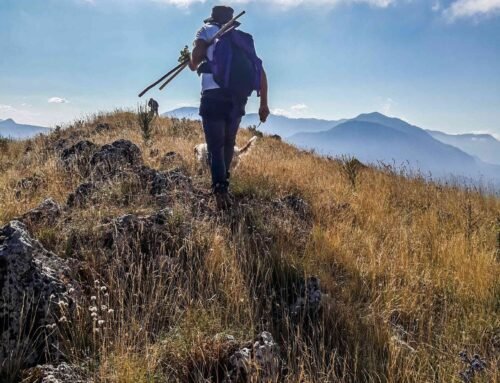CHURCH OF MADONNA DELLA SANITA’
Informations
Historical notes on the miraculous image of St. Maria della Sanità of Caposele, the town praised by the sculpted words of the poet Dione Afranio: “Silari gurges Spectabile flumen,” is described as a privileged and blessed land, as it enjoys the high protection of St. Maria della Sanità of Caposele. The devotion to the Mother of God dates back to the year 1710.
At the sources of the Sele, in very poor huts, lived miserable shepherds who, with living faith, venerated the heavenly Queen under the mysterious title of St. Mary of Health, painted in a niche of those ancient shacks. The popular tradition, recorded by the brothers Dr. Nicola and Lorenzo Sac. Santorelli in the book “The Sele River and Its Surroundings,” tells us that a friar named Paul frescoed her image, which became so vivid that everyone delighted in gazing upon and venerating it. But the faith of those simple people from Sele grew: after some years, where once a temple to Juno Argive stood, a charming little church dedicated to St. Mary of Health was built. This miraculous event attracted the villages of the Sele valley and Irpinia: thousands came from all sides to ask for new graces from Mary and to thank her for those received. And all those who were fortunate enough to visit the beloved Mother, all, like the disciples of John the Baptist, repeated enthusiastically: “Go, run to where the clear and crystalline Sele flows; there where Mary of Health reigns: the blind see, the lame walk, and the deaf regain their hearing!”
But the power and protection of Mary of Health were admired by Caposele in June 1743. That year, the people of Caposele were struck by the horrible plague that had devastated Sicily and Naples, and through the intercession of the tender Mother Mary, they were completely liberated. It was July 1837, and Caposele was once again infested by cholera, which, with equal fury, destroyed the strong and the weak, the rich and the poor. There were days, as Santorelli says, when there was not enough time to bury the corpses, so great was the number of victims. But the people of Caposele remembered they had a tender and powerful Queen, Mary of Health. They turned to her, and oh, what a miracle! On the day when her solemn feast was celebrated, the fierce disease, as if by enchantment, ceased, restoring life even to those on the brink of the grave.
In 1839, cholera brought desolation and death to many villages in the Sele valley, in Valva, Colliano, Contursi, and Oliveto Citra; but, through the intercession of Mary of Health, Caposele remained unscathed, and the people of the Sele valley were soon and completely liberated. The people of Caposele had always felt a tender and powerful affection for their beloved Mother, who tirelessly watches over the good of her children; but during these times, faith and love united them in a single heartbeat and moved them unanimously to give her a sign of the most loving gratitude.
In 1812, the miraculous image of St. Mary of Health was taken to the Church of the Antonines because the little church had developed large cracks due to soil landslides and the impetuous current of the river; and for over 40 years, the sacred painting by Brother Paul remained in a splendid niche of the current parish church, where it was always venerated and invoked by her beloved children. After the last extraordinary benefits, clergy and people decided to lay new and more secure foundations for a little church at the sources of the Sele. When the new little church was completed, that piece of wall where the ancient image is painted was brought back to its original site among the melodious songs of a devoted and moved people. From that day, a new life of love and piety began to unfold. The feast was established for the Sunday after August 16, and nothing was neglected in adorning the new home of St. Mary of Health splendidly. Animated by the same faith, the people of the Sele Valley: Contursi, Palomonte, Valva, Colliano, Oliveto Citra, Laviano, Senerchia, and Calabritto, as well as other towns in Irpinia, including Calitri and Pescopagano, have always come in numerous pilgrimages to venerate She who reigns as Queen over the Sele to comfort and heal. The numerous gifts of gold, which are preserved in special display cases, elegantly proclaim a secular and constant worship and the universality of the graces bestowed by Mary. Later, due to the works of the Apulian Aqueduct, the little church, built after the epidemic of 1839, was demolished, and the miraculous Mother of Health was brought back to the Parish Church, where she remained for more than two years. Meanwhile, the people of Caposele unanimously expressed their pious and ardent desire: they wanted the Concessionary Society of the Apulian Aqueduct, Ercole Antico & Co., to also rebuild a temple at the sources of the Sele for She who has been, and will be, the tender and loving Mother of the children of the Sele. The prayers of the civic and religious community were fully satisfied. The single-nave structure that you can visit today in Piazza Sanità is indeed the one reconstructed, complete with the portal and entrance steps, the altar, the baptismal font, and the fresco of Our Lady of Health, original pieces from the early 18th century. Even today, the third Sunday of August is the day designated for celebrations in her honor.










